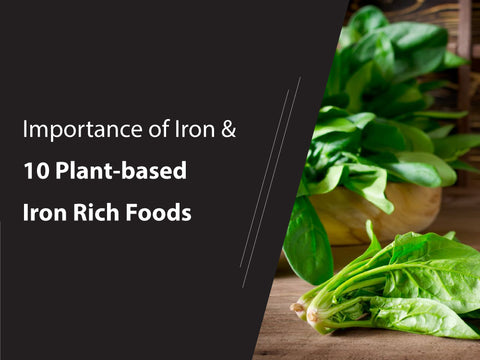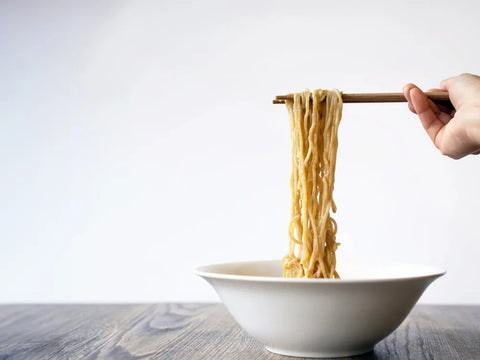Mochi is a chewy Japanese rice cake traditionally made with glutinous rice, known as mochigome.
It becomes soft and slightly sticky through a process where you first steam the rice and then pound it into a smooth, elastic dough.
The History of Mochi
Mochi-making has its roots as far back as several centuries and has played the dual role of food for showing respect in Shinto rituals and as a celebratory dish during the Japanese New Year.
Mochi ranges from a very simple to an elaborate creation and is available in an unimaginable number of flavours and shapes, which has made it a beloved, indispensable part of Japan's gastronomic repertoire.
Glutinous Rice (Mochigome) for Mochi
Glutinous rice, mochigome, is the key component to preparing mochi. That special quality of rice forms the very heart of mochi's distinctive, delicious texture.
Glutinous rice, once cooked and pounded, turns from its firm, separate pieces into a sticky and cohesive mass. Being able to witness this gastronomical transformation provides an insight into the very core of mochi-making.
The difference between glutinous rice and other forms of rice is in the starch composition.
Each grain of glutinous rice has higher amylopectin and almost no amylose.
This molecular structure is responsible for the sticky and elastic nature of rice, something that makes the ideal mochi and thus cannot be replaced.
This important chewy texture is completely lacking in other rice varieties; even while being white or with similar shapes, it just will not do.
In the world of mochi, rice is more than an ingredient; it becomes a textured narrative of tradition and modern-day culinary artistry.

What is Mochi Made of?
Mochi is initially made of mochiko to have chewy texture.
Mochiko is made from mochigome, a type of glutinous, short-grain rice noted for its higher starch content.
Starch gives it special sticky and elastic properties upon cooking, enabling it to create that chewy, stretchy texture of mochi.
Mochigome is the base from which mochiko is prepared.
The first processing of rice grains consists of soaking them in water to take out the outer husk, thus assuring a pure and clean product.
The grains are then dehydrated with great care to take out moisture and then ground into fine powder.
This careful process assures that mochiko retains all the essential qualities of mochigome but in an easy-to-use form for a wide range of recipes.

Methods to Prepare Mochi
The process of making mochi is quite labor-intensive and traditionally involves pounding the steamed rice with large wooden mallets in a rhythmic, team effort called "mochitsuki."
The texture of mochi is its most distinctive feature—soft, stretchy, and slightly sticky, which makes it a delightful treat for many.
The art of making rice cakes translates into bonding. Traditionally, families and neighbours gather during New Year's celebrations.
Group pounding delivers more than just mochi; it reinforces bonds and ushers in good fortune to come in the new year.
While tradition holds its sacred place, modernity has conceived its ways of making mochi to suit the lifestyle of contemporary living.
Kitchen appliances, from mochi makers to microwaves, have been harnessed and adapted to streamline the process, carrying over the reverential past to the convenient present.
Traditional methods involve soaking the rice overnight, then steaming it and relentlessly pounding it up and down in the motar with mallets until the rice becomes mochi.
Quite often, communities regard the making of mochi to be an event undertaken en masse, sharing in the labor as well as the product of such labor.
In modern times, mochi preparation has been democratized through tools, and enthusiasts take a crack at the art of mochi-making at home without specialized equipment.
At The Plant Based Workshop, we have kept these traditions alive! Every year, we come together to enjoy this tradition and touch base with our community.
The tools we use to prepare mochi are the following:
- Usu: A large wooden mortar carved from a sturdy tree-like oak.
- Kine: A heavy wooden mallet used for pounding the rice.
The Pounding Process of Mochi
- Steaming: The soaked rice was steamed thoroughly in large steamers to further soften it and make it more pliable.
- Initial Mashing: The steaming hot rice was transferred to the usu. A team member, often using a moistened wooden paddle, would start by roughly mashing the rice to break down the clumps.
- The Rhythm Begins: Here's where the teamwork comes in. Two, or sometimes more, people would take turns rhythmically pounding the rice with the kine. One person would pound while the other would use a large wooden spoon or paddle to constantly fold and turn the rice over in the usu, ensuring even pounding.
- Water and Teamwork: Throughout the process, small amounts of hot water were sprinkled onto the rice to keep it moist and prevent burning. The pounding continued for a significant amount of time, often for an hour or more, requiring coordinated movements and exertion from the participants.
- Mochi Formation: As the pounding continued, the rice grains gradually transformed. They lost their individual shapes and became a sticky, cohesive mass. This signaled the mochi was nearing completion.
- Final Kneading: Once the desired consistency was achieved, the hot mochi was transferred to a moistened work surface. A skilled individual would quickly knead the mochi to ensure even texture and expel any air bubbles.
- Shaping and Cooling: With wet hands to prevent sticking, the mochi would be shaped into desired forms, like balls or squares. The finished mochi would then be dusted with cornstarch or kinako (roasted soybean flour) to prevent sticking and aid in cooling.

A Feast for the Senses: Types of Mochi
Discover astonishing types of mochi that satisfy not only the palate but also the eyes.
From sweet and round daifuku, gold-dusted kinako mochi, and the innovative twist of mochi ice cream, this Japanese confection has gradually become a tapestry of tastes and textures.

Daifuku: A Sweet Surprise
Daifuku mochi wraps up a sweet interior of red bean paste, in its soft and chewy exterior.
Many creators of this type of mochi are always preparing it with seasonal fruits like strawberries to give the daifuku a refreshing taste.
When one takes a tender bite of a daifuku, an immediate perfect harmony of subtle sweetness and smoothness flows right into the hearts of all, from children to adults.

Kinako Mochi: A Nutty Delicacy
Another equally famous type of mochi is kinako mochi, which is liberally dusted with kinako - a type of roasted soybean flour that gives a nutty flavour and a velvety feel.
During the cold months, kinako mochi is a popular treat that offers a warm and comforting experience when savored, as its flour coating melts into the gooey rice dough.

Ice Cream Mochi: A Modern Twist
The genius of ice cream mochi lies in the fusing of traditional mochi skin with a core of creamy ice cream.
This modern version retains the chewy texture of mochi, while its cool burst of flavour - from vanilla to matcha - awes those who have a taste for modern desserts.
Each of these types of mochi is a work rather than a mere confection. Every shape and colour add to the allure - from the roundness of daifuku, which symbolizes harmony, to the soft pastel colours of ice cream mochi, which speak volumes about playfulness.
Enjoy the craftsmanship that shapes edible delight into a wide gamut of sensations.
Mochi Cake Recipes at Home
Baking mochi cake at home is more convenient and easier than you think. Our simplified mochi cake recipes will help you taste Japanese delight at home.

Matcha Mochi Cake Recipe

Ingredients:
- 1 bag of Plant Based Workshop Matcha Mochi Cake Mix
- 1 cup coconut milk (or any plant-based milk)
- 1/4 cup vegetable oil
- 1/2 cup water
- Powdered sugar for dusting (optional)
- Fresh berries or matcha ice cream for serving (optional)
Instructions:
- Preheat your oven to 350°F (175°C) and grease a baking pan.
- In a large bowl, combine the Matcha Mochi Cake Mix, coconut milk, vegetable oil, and water. Stir until the batter is smooth and well combined.
- Pour the batter into the prepared pan and smooth the top with a spatula.
- Bake for 20 minutes, or until the edges start to pull away from the pan and the top is firm to the touch.
- Allow the cake to cool completely in the pan before cutting it into squares.
- Dust with powdered sugar before serving, if desired. Serve with fresh berries or a scoop of matcha ice cream for an extra treat.
Nutritional Information:
Per 1/12 package (40g):
- Calories: 150 kcal
- Fat: 0g
- Saturated: 0g (0% DV)
- Trans: 0g (0% DV)
- Carbohydrate: 37g
- Fiber: 1g (4% DV)
- Sugars: 19g (19% DV)
- Protein: 2g
- Sodium: 85mg (4% DV)
- Potassium: 94mg (2% DV)
- Calcium: 22mg (2% DV)
- Iron: 0.2mg (1% DV)
- Vitamin A: 99µg (11% DV)
- Vitamin C: 3.6mg (4% DV)
Chocolate Mochi Cake Recipe

Ingredients:
- 1 bag of Plant Based Workshop Chocolate Mochi Cake Mix
- 1 cup almond milk (or any plant-based milk)
- 1/4 cup vegetable oil
- 1/2 cup water
- 1/2 cup chocolate chips (optional)
- Chocolate glaze or ganache for topping (optional)
Instructions:
- Preheat your oven to 350°F (175°C) and grease a baking pan.
- In a mixing bowl, combine the Chocolate Mochi Cake Mix, almond milk, vegetable oil, and water. Stir until the batter is smooth. Fold in chocolate chips for extra chocolatey goodness, if desired.
- Pour the batter into the prepared pan, spreading it evenly.
- Bake for 20 minutes, or until the top is set and the edges begin to pull away from the sides.
- Let the cake cool completely in the pan before cutting it into squares.
- Drizzle with chocolate glaze or ganache before serving for a decadent finish.
Nutritional Information:
Per 1/12 package (40g):
- Calories: 150 kcal
- Fat: 0g
- Saturated: 0g (0% DV)
- Trans: 0g (0% DV)
- Carbohydrate: 37g
- Fiber: 1g (4% DV)
- Sugars: 19g (19% DV)
- Protein: 2g
- Sodium: 85mg (4% DV)
- Potassium: 94mg (2% DV)
- Calcium: 22mg (2% DV)
- Iron: 0.2mg (1% DV)
- Vitamin A: 99µg (11% DV)
- Vitamin C: 3.6mg (4% DV)
These recipes are tailored to highlight the flavours and textures of the Plant Based Workshop's mochi cake mixes, offering a delicious, easy-to-make dessert option.
So, the next time you crave a chewy mochi treat or want to explore gluten-free options in the kitchen, reach for a bag of our mochi cake mixes.
This versatile mix offers a gateway to delicious Japanese tradition and a world of culinary possibilities!
FAQs About Mochi
Is mochi gluten-free?
Yes, mochi by nature contains no gluten when made from glutinous rice. The misleading use of the word "glutinous" means rice itself does not contain gluten, hence presenting no problem for people with celiac disease or gluten intolerance. However, if you purchase pre-packaged mochi in a store, pay attention to the ingredients used in preparation, as some modern recipes may include additives that do contain gluten.
Is mochi vegan-friendly?
Yes, mochi can be vegan-friendly, especially if they are made from simple ingredients like glutinous rice and water. However, some mochi products contain non-vegan fillings such as dairy-based creams or eggs; thus, reading labels for such ingredients is needed, or one should make their own mochi to ensure that it is totally plant-based.
How is mochi different from rice cakes?
Although both mochi and rice cakes are rice-based, they differ in preparation and texture. Mochi is made from a type of glutinous rice pounded into sticky and elastic dough, while rice cakes are most often made from regular rice that is puffed or compacted into hard, crunchy disks. Mochi may be chewy, whereas rice cakes are light and crisp.
Can mochi be kept at room temperature?
No, it may affect mochi's nature of turning dry and solid from soft. Fresh mochi has to be consumed rather sooner. This can be stored for longer periods in the refrigerator or freezer. Freezing will somewhat affect its texture, mainly in the chewy feeling it gives. Reheating or microwaving may bring back frozen mochi to its soft, original state.
Where to buy Mochi and how to order?
You can buy mochi online on our website directly. Visit the Plant Based Workshop's mochi cake mix page, add any flavour of Mochi Cake Mix product to your cart, and proceed to checkout.




Comments (0)
There are no comments for this article. Be the first one to leave a message!